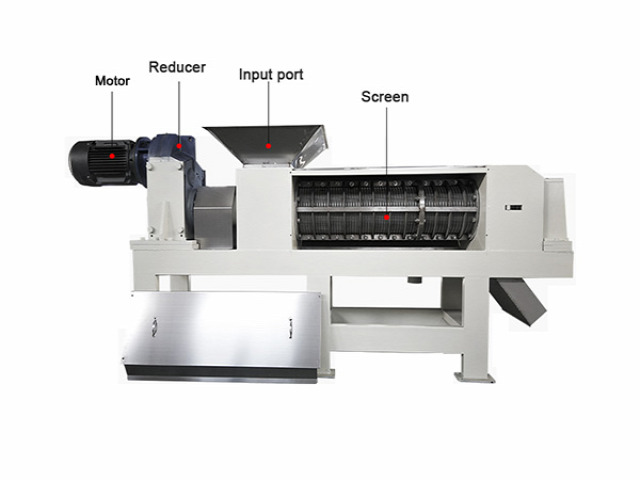A screw dewatering machine is a critical piece of equipment used in various industries, including the processing of spent grains, to separate liquids from solid materials efficiently. In the context of spent grains, which are typically a byproduct of brewing or distilling processes, the dewatering machine plays a crucial role in the recovery of valuable resources and the reduction of waste. To understand the working principle of a screw dewatering machine in processing spent grains, we need to delve into its components, operating mechanisms, and the benefits it offers.
Components of a Screw Dewatering Machine:
A typical screw dewatering machine consists of several key components:
1. **Screw Conveyor:** The heart of the dewatering machine is the screw conveyor, which is a helical auger that rotates within a cylindrical screen. This conveyor is responsible for moving the material through the dewatering process.

2. **Screen or Sieve:** The cylindrical screen or sieve is positioned around the screw conveyor. It has small perforations or mesh openings that allow liquid to pass through while retaining the solid material.
3. **Hopper:** Spent grains are typically introduced into the dewatering machine through a hopper, which directs the material to the screw conveyor.
4. **Drive Mechanism:** A motor or drive mechanism powers the screw conveyor, enabling it to rotate and transport the material through the machine.
5. **Collection System:** The separated liquid (often referred to as filtrate or effluent) is collected and discharged separately from the dewatered solid material.
Working Principle of a Screw Dewatering Machine:
The working principle of dewatering machine is based on the concept of mechanical dewatering. It involves the following steps:
1. **Material Introduction:** Spent grains are fed into the hopper of the dewatering machine. The screw conveyor then begins to rotate, pushing the material into the cylindrical screen.
2. **Compression and Dewatering:** As the spent grains move along the screw conveyor, they experience a combination of mechanical forces. The helical shape of the screw compresses the material, squeezing out the liquid component. This compression effectively reduces the moisture content in the material.
3. **Liquid Separation:** The liquid component is forced through the perforations in the cylindrical screen due to the mechanical pressure generated by the rotating screw conveyor. This liquid, which now contains dissolved or suspended solids from the spent grains, is collected separately and can be recycled or treated as necessary.
4. **Dewatered Solid Discharge:** The dewatered solid material, which has a significantly reduced moisture content, continues to move along the screw conveyor until it reaches the end of the machine. At this point, it is discharged from the machine and can be further processed, reused, or disposed of as required.
Benefits of a Screw Dewatering Machine in Processing Spent Grains:
1. **Reduced Moisture Content:** One of the primary benefits of using a screw dewatering machine is its ability to significantly reduce the moisture content in spent grains. This not only makes the material easier to handle and transport but also reduces the volume of waste, leading to cost savings in waste disposal.
2. **Resource Recovery:** By separating the liquid component from spent grains, valuable resources, such as water and process chemicals, can be recovered and reused in the production process. This helps in reducing operational costs and minimizing environmental impact.
3. **Improved Product Quality:** The dewatering process can lead to an improvement in the quality of the dewatered solid material. In the case of spent grains, this can result in a more concentrated and valuable byproduct that may be used as animal feed or for other applications.
4. **Environmental Benefits:** Dewatering machines contribute to environmental sustainability by reducing the environmental footprint of waste disposal and minimizing water consumption in industrial processes.
5. **Automation and Efficiency:** These machines are designed for continuous operation and can be automated, reducing the need for manual labor. This leads to improved process efficiency and consistent dewatering results.
In conclusion, the screw dewatering machine in processing spent grains involves mechanical dewatering through a combination of compression and liquid separation. This process offers various benefits, including reduced moisture content in the material, resource recovery, improved product quality, environmental sustainability, and process efficiency. It is a valuable tool for industries dealing with spent grains and other similar materials, as it helps in managing waste, reducing costs, and promoting sustainability.

